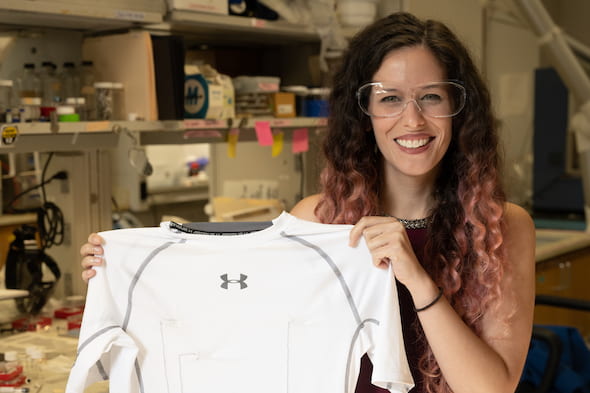
As the market for wearable devices continues to grow, scientists try to find newer materials that suit the industry’s needs. In 2003, a multi-institutional team consisting of researchers from Rice University, the U.S Air Force and others, introduced a fiber made of thermal and electroconductive carbon nanotubes that could be spun into thread.
Since its discovery, researchers around the world have used these carbon nanotube fibers in a host of different applications. These include recording neuronal activity in the brain and reconnecting electric signals between damaged heart tissues to restore their function.
Matteo Pasquali, professor of chemical and biomolecular engineering and chemistry at Rice, and lead researcher in the 2003 project.
“We see that, after two decades of development in labs worldwide, this material works in more and more applications. Because of the combination of conductivity, good contact with the skin, biocompatibility, and softness, carbon nanotube threads are a natural component for wearables,”
Recently, researchers from his lab incorporated these carbon nanotube fiber threads into a t-shirt, creating what they call “smart clothing”.
The skin-hugging shirt contains rows of fibers that can conduct electric signals from the heart for monitoring purposes. The fibers can be connected to Bluetooth devices such as smartphones or to Holter monitors to display the heart rate and a continual electrocardiogram (EKG).
So how well does the shirt compare to conventional cardiac monitors?
According to the tests the researchers conducted, the smart shirt could detect electrical heart signals better than both a chest-strap monitor and a commercial electrode monitor.
This means that these shirts would be of great interest to athletes, allowing them to monitor their vitals consistently. Furthermore, the military can use these shirts as antennae to track missing personnel. This use adds on to the carbon nanotube’s previously demonstrated potential as better ballistic protection than the currently used Kevlar.
The design
The researchers used a zig-zag pattern to sew the fibers onto their shirts ensuring that they stretch without breaking. Originally, these fibers were too thin for a regular sewing machine. So what did they do? Get a rope maker of course.
The project’s lead author, Lauren Taylor, explained that they got a custom device from a maker who sold machines that wove ropes for model ships. This helped the scientists make a thread thick enough to sew with.
The team is currently collaborating with the Texas Heart Institute to work on maximizing the shirt’s contact with skin. This will ensure that the fibers can gather better data.
Source: https://news.rice.edu/2021/08/30/smart-shirt-keeps-tabs-on-the-heart/



